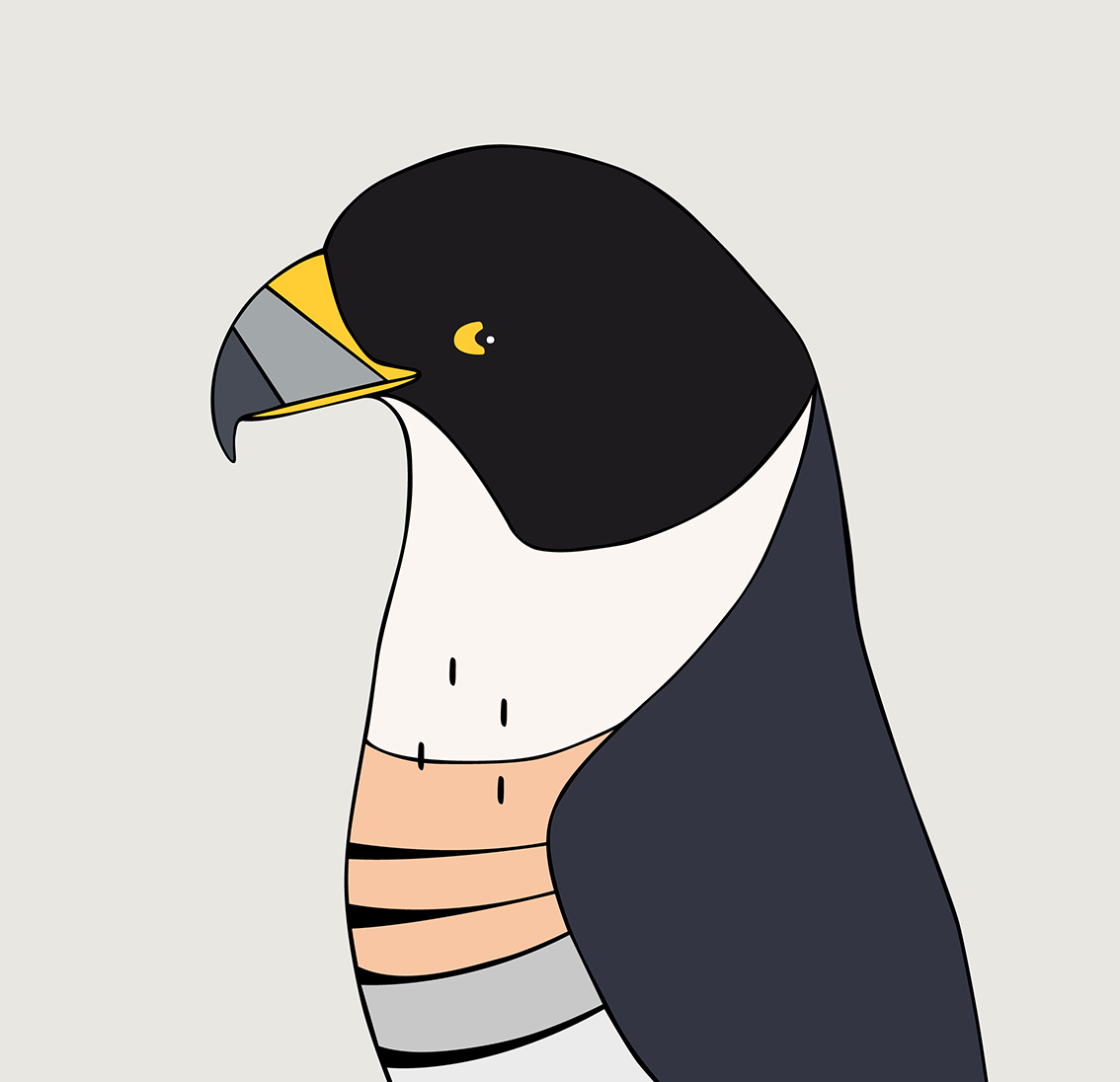Peregrine Falcon

Who am I?
I’m the fastest bird in the world and I dive down to catch birds at speeds of more than 300 kilometres per hour! No chance they’ll see ME coming!
I usually make my home on cliffs, so the skyscrapers of Melbourne make me feel right at home. From up here I can spot unsuspecting prey AND no-one can reach me – except another Peregrine!
Peregrine Falcons like me and my partner have been making their home on 367 Collins Street for more than thirty years! Now tens of thousands of people watch us breed and raise our chicks each year via Falcon Cam (weirdos!).
Peregrine territories extend 20 – 30 kilometres in every direction, so if you see a Peregrine in the city you can be sure it is me, my partner, or an intruder!
Meet me
See through my eyes
Listen to my world
Watch the Peregrine livestream!
This livestream is maintained by Birdlife Australia’s Victorian Peregrine Project and Mirvac Group. Mirvac are proud sponsors of the Victorian Peregrine Project and its conservation research to improve the management of one of Victoria’s rarest birds.
What can I do to help Peregrine Falcons and other birds of prey?
Peregrines have adapted well to city life by making their nests on tall buildings and structures, so the best things we can do for them involve protecting their prey species.
The Peregrine Falcon’s native prey include parrots, honeyeaters and small birds like Pardalotes and Silvereyes, but they’ll eat any bird that is unlucky enough to cross their path. We can help keep numbers of native birds up by planting trees and bushes in our gardens, and encouraging councils and developers to avoid habitat destruction and develop green suburbs.
There is another major way we can protect Peregrine Falcons and other birds of prey (including owls) and that’s by avoiding use of poisons to target rats, mice and other animals. Common pest-baits sold in major retailers are unsafe for native wildlife because they can be transferred from the target animal into any predator that eats them. Animals that have eaten poisoned bait are easier for predators to catch, and this has led to mass deaths among our owl and raptor populations.
“The most commonly-used rodent poisons are anticoagulant rodenticides (ARs). These act as blood thinners, so rats and mice can consume a lethal dose but not feel sick until later. Newer ARs, called second generation anticoagulant rodenticides (SGARs), are powerful enough that a single feed can be lethal. But because of the time lag between taking a bait and feeling the effects, rodents can consume a more-than-lethal dose and still be wandering around – like walking time bombs” – Birdlife Australia
The Peregrine diet is almost solely bird-based, so they are at risk from eating cockatoos or feral pigeons that have eaten poisoned grain left out for mice and rats. Other birds of prey are at the same risk, but are also at risk of eating rats or mice poisoned around the home.
Death from these SGAR poisons is slow and agonising for both target species and any predators that are unlucky enough to hunt them.
Birdlife Australia has an amazing poster that shows you why we should avoid using these baits and how to control feral pests humanely and in a wildlife-friendly way.
Lastly, if you are lucky enough to spot the nest of a Peregrine Falcon or another bird of prey, always keep your distance, use the zoom on your camera if you want to snap a photo and try not to linger. While this is ethical behaviour for all species, peregrines are particularly sensitive to nest disturbance and may abandon their babies after just one disturbance.
A collaboration between Remember The Wild and eggpicnic.
Supported by the City of Melbourne.





